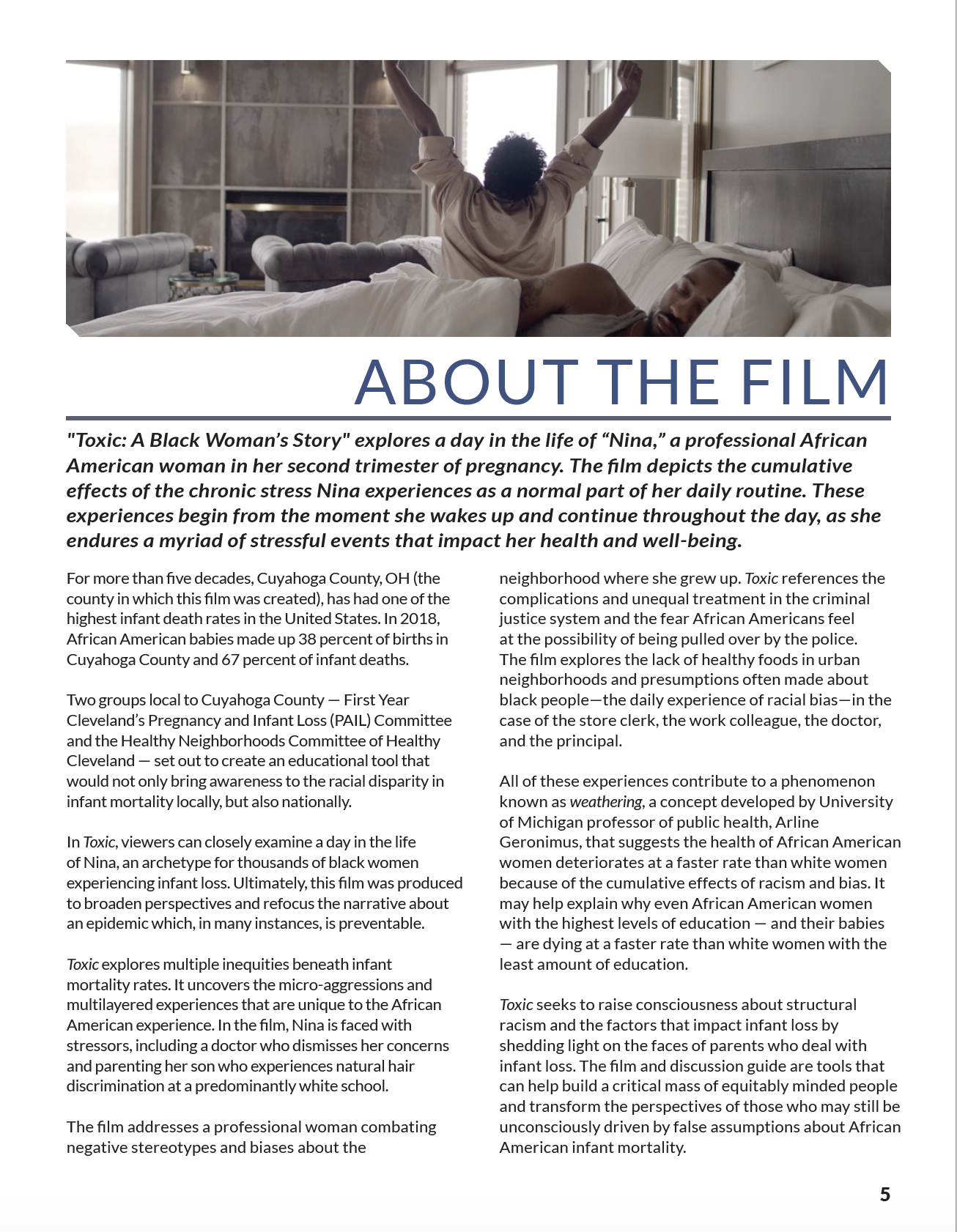A purchase of Toxic includes an in-depth discussion guide surrounding the contents of the film. Visible here is page 5, “About the Film”, as seen in the discussion guide.
Toxic: A Black Woman’s Story explores a day in the life of “Nina,” a professional African American woman in her second trimester of pregnancy. The film depicts the cumulative effects of the chronic stress Nina experiences as a normal part of her daily routine. These experiences begin from the moment she wakes up and continue throughout the day, as she endures a myriad of stressful events that impact her health and well-being.
For more than five decades, Cuyahoga County, OH (the county in which this film was created), has had one of the highest infant death rates in the United States. In 2018, African American babies made up 38 percent of births in Cuyahoga County and 67 percent of infant deaths.
Two groups local to Cuyahoga County — First Year Cleveland’s Pregnancy and Infant Loss (PAIL) Committee and the Healthy Neighborhoods Committee of Healthy Cleveland — set out to create an educational tool that would not only bring awareness to the racial disparity in infant mortality locally, but also nationally.
In Toxic, viewers can closely examine a day in the life of Nina, an archetype for thousands of black women experiencing infant loss. Ultimately, this film was produced to broaden perspectives and refocus the narrative about an epidemic which, in many instances, is preventable.
Toxic explores multiple inequities beneath infant mortality rates. It uncovers the micro-aggressions and multilayered experiences that are unique to the African American experience. In the film, Nina is faced with stressors, including a doctor who dismisses her concerns and parenting her son who experiences natural hair discrimination at a predominantly white school.
The film addresses a professional woman combating negative stereotypes and biases about the neighborhood where she grew up. Toxic references the complications and unequal treatment in the criminal justice system and the fear African Americans feel at the possibility of being pulled over by the police. The film explores the lack of healthy foods in urban neighborhoods and presumptions often made about black people—the daily experience of racial bias—in the case of the store clerk, the work colleague, the doctor, and the principal.
All of these experiences contribute to a phenomenon known as weathering, a concept developed by University of Michigan professor of public health, Arline Geronimus, that suggests the health of African American women deteriorates at a faster rate than white women because of the cumulative effects of racism and bias. It may help explain why even African American women with the highest levels of education — and their babies — are dying at a faster rate than white women with the least amount of education.
Toxic seeks to raise consciousness about structural racism and the factors that impact infant loss by shedding light on the faces of parents who deal with infant loss. The film and discussion guide are tools that can help build a critical mass of equitably minded people and transform the perspectives of those who may still be unconsciously driven by false assumptions about African American infant mortality.


